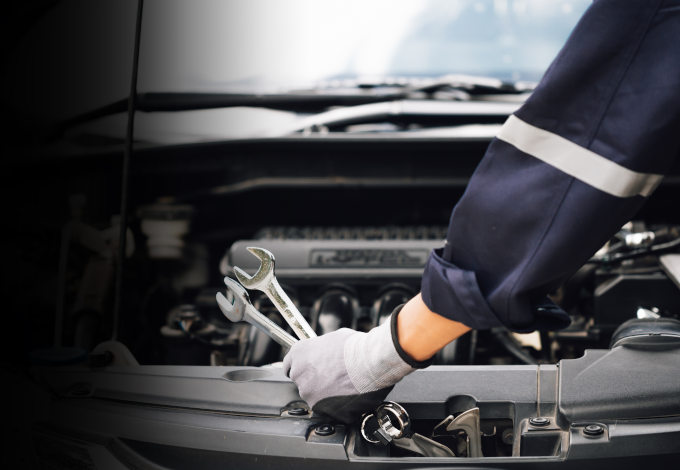In the pursuit of greener and more sustainable living, the topic of fuel efficiency has taken center stage. As the world grapples with environmental concerns and rising fuel costs, every vehicle owner has a role to play in minimizing their carbon footprint and maximizing their budget. While various factors influence a vehicle's fuel efficiency, one of the most critical and often overlooked components is the transmission. In this article, we will delve into the intricacies of the role of transmission in fuel efficiency, and provide you with valuable driving tips and maintenance practices to optimize your vehicle's fuel economy.
Understanding the Transmission-Fuel Efficiency Connection
Before we delve into the specifics, it's important to comprehend how a vehicle's transmission affects its fuel efficiency. The transmission serves as the bridge between the engine and the wheels, allowing the engine's power to be transmitted to the wheels efficiently. Different types of transmissions, such as automatic and manual, operate differently, but their impact on fuel efficiency remains a common concern.
- Automatic Transmissions: These transmissions have traditionally been associated with lower fuel efficiency due to their design, which involves hydraulic systems and torque converters that create internal friction. While modern advancements have led to more efficient automatic transmissions, they may still consume more fuel compared to their manual counterparts.
- Manual Transmissions: Manual transmissions give drivers more direct control over gear shifting, allowing them to optimize the engine's power delivery according to driving conditions. This control often translates into better fuel efficiency, as skilled drivers can upshift and downshift at appropriate times to maintain an optimal balance between power and fuel consumption.
- Continuously Variable Transmissions (CVTs): CVTs are a newer type of transmission that offers an infinite number of gear ratios, enabling the engine to operate within its most efficient range consistently. This technology has shown promise in enhancing fuel efficiency, as the engine's output is finely tuned to driving conditions.
Maintenance: The Key to Transmission Efficiency
Maintaining a well-functioning transmission is crucial for maximizing fuel efficiency. Neglected transmissions can develop problems that hinder smooth power delivery and increase fuel consumption. Here are some maintenance practices to keep your transmission in top shape:
- Regular Fluid Checks and Changes: Transmission fluid plays a vital role in cooling and lubricating the transmission components. Over time, this fluid can degrade, leading to reduced efficiency. Regularly checking the fluid level and color, and adhering to manufacturer-recommended fluid change intervals, can help ensure optimal performance.
- Cooling System Maintenance: Excessive heat can damage transmission components and degrade the fluid. Regularly inspecting and maintaining the cooling system, including the radiator and transmission cooler, can prevent overheating issues that affect fuel efficiency.
- Prompt Repairs: If you notice any signs of transmission problems such as rough shifting, delayed engagement, or unusual noises, it's crucial to address them promptly. Ignoring these issues can lead to further damage and decreased fuel efficiency.
Driving Tips for Optimal Fuel Economy
In addition to proper transmission maintenance, your driving habits play a significant role in determining your vehicle's fuel efficiency. Here are some driving tips to help you optimize your fuel economy:
1. Smooth Acceleration and Deceleration: Sudden and aggressive acceleration consumes more fuel by demanding higher engine output. Similarly, abrupt braking wastes energy. Aim for gradual acceleration and deceleration to keep your engine operating efficiently.
2. Maintain a Consistent Speed: Frequent changes in speed, such as rapid acceleration followed by sudden braking, lead to inefficiencies. Utilize cruise control on highways to maintain a steady speed and minimize fuel consumption.
3. Anticipate Traffic Flow: Being aware of traffic conditions ahead allows you to adjust your speed early, reducing the need for sudden stops and starts. This practice not only saves fuel but also contributes to smoother traffic flow.
4. Avoid Excessive Idling: Idling consumes fuel without providing any distance coverage. If you anticipate waiting for more than a minute, consider turning off your engine to conserve fuel.
5. Proper Tire Maintenance: Underinflated tires increase rolling resistance, requiring more energy to move the vehicle. Regularly check and maintain the recommended tire pressure to improve fuel efficiency.
6. Reduce Wind Resistance: Driving with windows down at high speeds or with a roof rack increases aerodynamic drag, negatively impacting fuel economy. Keep windows up and remove roof racks when not in use to minimize wind resistance.
7. Lighten the Load: Carrying unnecessary weight in your vehicle places additional strain on the engine and decreases fuel efficiency. Remove items from your trunk and backseat that you don't need for your trip.
8. Utilize Overdrive Gears: If your vehicle is equipped with overdrive gears, use them during highway driving. Overdrive gears allow the engine to operate at lower RPMs, improving fuel efficiency.
9. Plan Efficient Routes: Before heading out, use navigation apps to find the shortest and quickest routes, avoiding traffic congestion and unnecessary detours.
10. Combine Trips: Combining errands and trips into a single outing reduces cold starts and optimizes fuel efficiency.
In conclusion, the transmission's role in fuel efficiency cannot be underestimated. From choosing the right type of transmission to maintaining it properly and practicing efficient driving habits, you can significantly impact your vehicle's fuel economy. By understanding the nuances of how transmission and driving habits interact, you can contribute to a more sustainable future while saving money at the pump. Remember, a well-maintained transmission and mindful driving are essential components of the journey toward greater fuel efficiency. Schedule a checkup with your local AAMCO center today to make sure your transmission is in tip top shape!

 Schedule Appointment
Schedule Appointment















